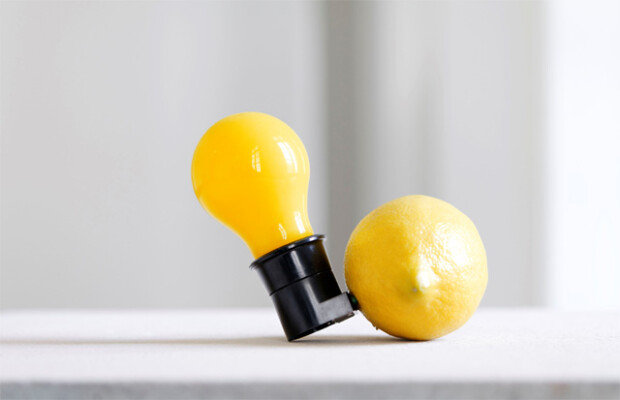Lemon light bulb created by behavioral artist
Lemon light bulb created by behavioral artist
Posted August. 08, 2019 09:11,
Updated August. 08, 2019 09:11

A yellow light bulb is plugged into a lemon. One may think that this is the result of a curious child’s play but it is actually an art piece created by Joseph Beuys, a prominent German artist of the 20th century. This is considered to be one of the most significant pieces he had created in later years of his life. Why did he plug a yellow light bulb into a fresh lemon, not an outlet?
There is only one reason. It is to derive the energy for a yellow light. This concept may sound like ridiculous nonsense, but Beuys proposed a question on the ecological balance of modern civilization through this piece. He believed that the lemon, which plays the role of a battery in the piece, symbolizes the integration among art, nature, and science, and this newly-obtained energy can build a better society.
In 1985, Beuys had created over 200 lemon batteries like this. He was staying at Capri, a small Mediterranean island in the south of Italy, to recover from his lung disease at that time. A bright yellow color of a light bulb represents a vibrant environment in the island and bright sunshine in the Mediterranean. The German artist sincerely hoped for a world full of powerful and warm energy, just like his yellow light bulb, even though his life was coming to an end.
The instructions that came with the piece said the battery must be replaced every 1,000 hours, but in fact, there is no need for replacement as the light bulb cannot be turned on. Instead, the instruction holds his message to save and use well the energy derived from nature and to have it circulated permanently. The symbolic piece represents his life-long interests in energy, warmth, healing, and the environment. Beuys was heavily involved in environmental activism, even to have become one of the founding members of the German Green Party, the very first green political party of the nation. He was a proactive behavioral artist who pursued a close connection between art and life.
Beuys, who claimed that everyone is an artist, refused a traditional concept of what art is and produced countless pieces that challenged the barriers between art and life and between nature and culture, as seen in his lemon battery. He called himself a shaman and strived to build a better place by healing the wounds of individuals and society through art. He died at the age of 64, a year after he showcased “Capri Battery.”







